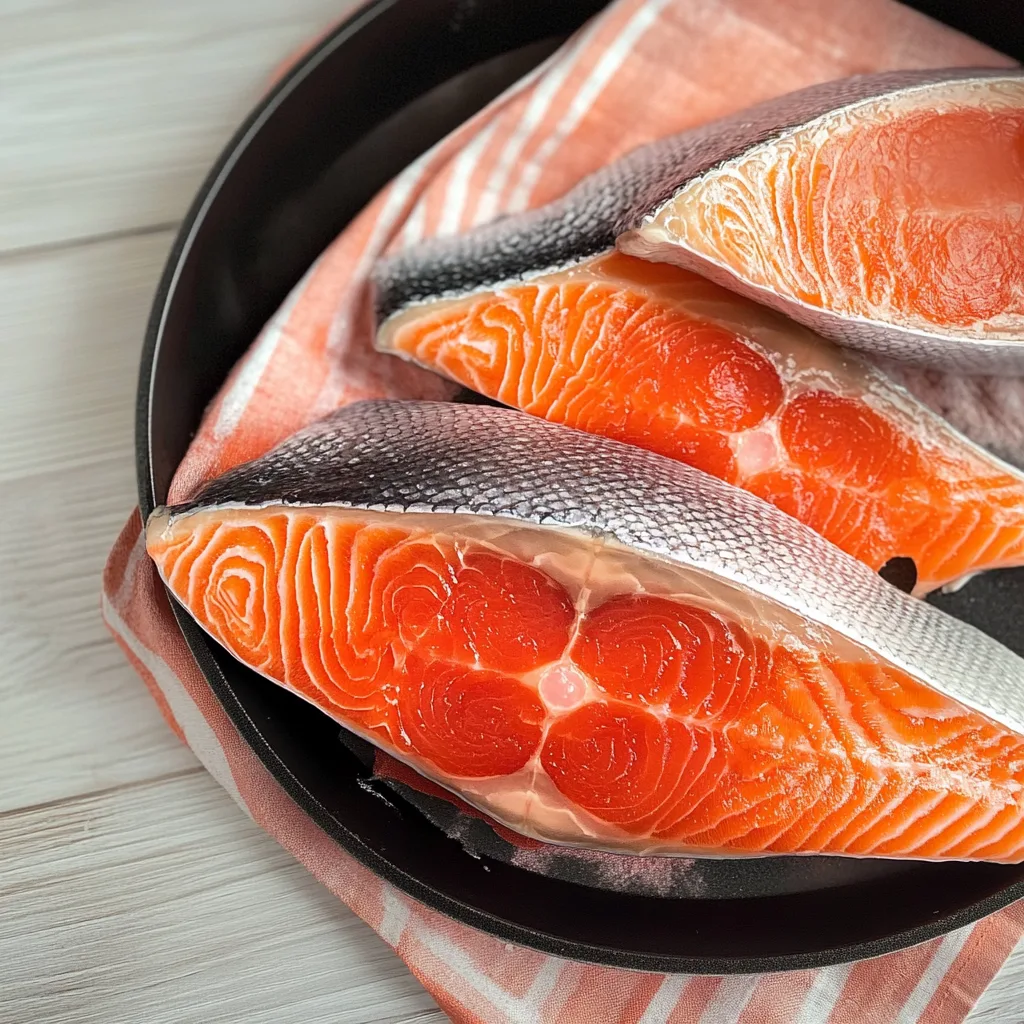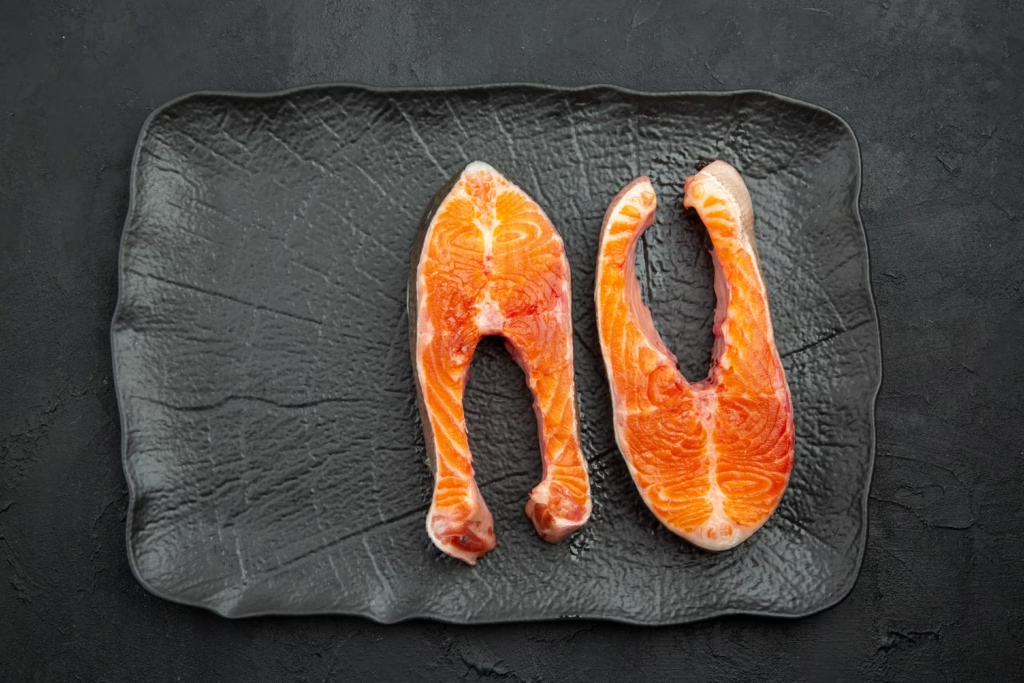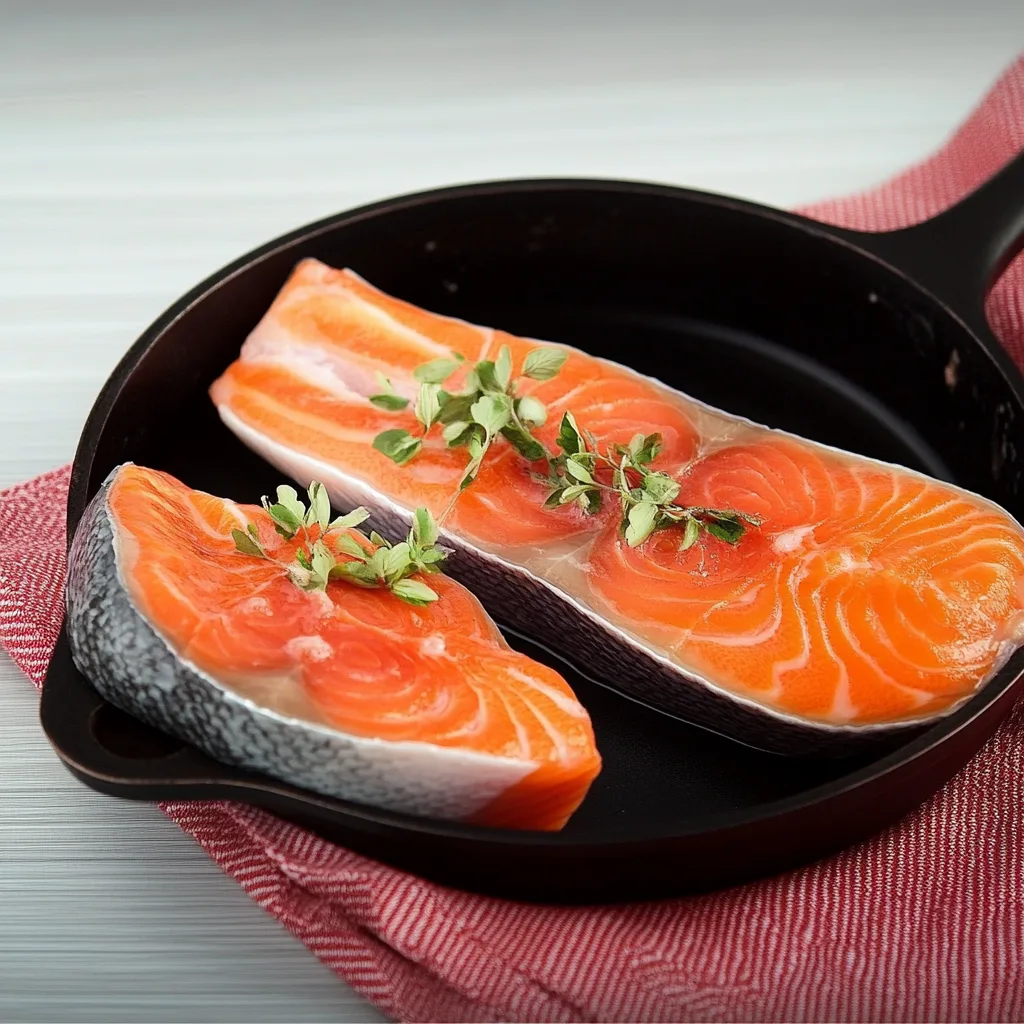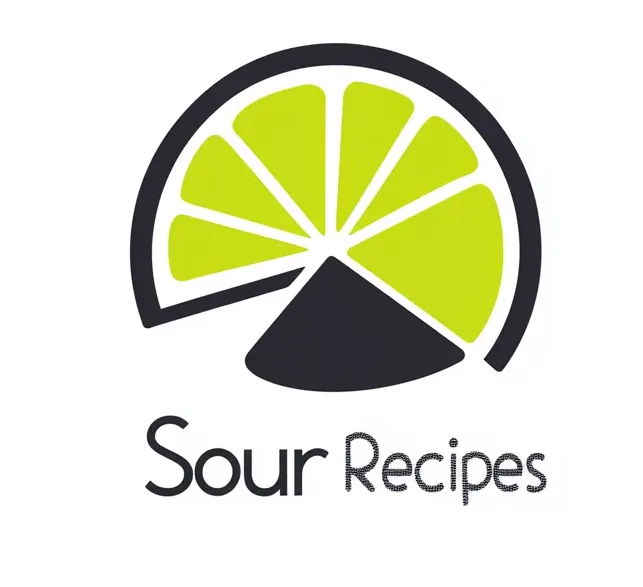How Long Does Cooked Salmon Last in the Fridge: A Complete Guide
Cooked salmon is a versatile and nutritious protein, perfect for a wide range of meals, from light salads to hearty pastas. However, understanding how long cooked salmon lasts in the fridge is essential for maintaining both safety and quality. Improper storage can lead to spoilage, waste, and even foodborne illnesses.
In this detailed guide, we’ll explore the factors affecting the shelf life of cooked salmon, provide tips for proper storage, and suggest creative ways to use leftovers. Whether you’re a meal prep enthusiast or simply saving last night’s dinner, these insights will help you make the most of your salmon.
For complementary dishes, consider pairing salmon with smoky baked beans for a smoky, hearty twist, or with creative chili recipes for a balanced and nutritious meal.
Why Storing Cooked Salmon Properly Is Important
Cooked salmon, like all seafood, is highly perishable. Without proper storage, it can quickly spoil, leading to unpleasant smells, taste changes, and potentially dangerous bacteria. Refrigerating or freezing salmon promptly after cooking helps prevent these issues while maintaining its quality.
Beyond safety, proper storage ensures the salmon retains its delicate texture and distinct flavor. Storing salmon in airtight containers minimizes air exposure, which can dry out the fish and cause freezer burn if frozen improperly. If you’re looking for reliable storage tips, check out this detailed guide on handling perishables.

The Role of Timing and Temperature in Extending Shelf Life
The key to extending the shelf life of cooked salmon lies in timing and temperature control. Refrigerating salmon within two hours of cooking significantly reduces the risk of bacterial growth. The ideal fridge temperature for storing cooked salmon is 40°F (4°C) or below.
If you plan to store salmon for longer periods, freezing is a practical option. Properly frozen salmon can last up to three months without losing its flavor or texture. To preserve its quality, wrap the salmon tightly in plastic wrap and place it in a freezer-safe bag, ensuring minimal air exposure. For creative meal ideas to pair with your salmon, explore these smoky side dishes.
By understanding and following these principles, you can enjoy delicious, safe, and fresh salmon whenever you like. Let’s dive into the specifics of storing, reheating, and creatively using cooked salmon!

Why Proper Storage of Cooked Salmon Matters
1. Health Risks of Improper Storage
Cooked salmon, like all seafood, is highly perishable. Improper storage can lead to the growth of harmful bacteria, including Listeria monocytogenes and Salmonella. Consuming spoiled salmon can result in foodborne illnesses with symptoms such as nausea, vomiting, and diarrhea.
2. Preserving Flavor and Quality
Proper storage ensures that the salmon retains its delicate flavor and moist texture. Using airtight containers or food-grade wraps helps prevent the fish from drying out or absorbing odors from other foods in the fridge. For more tips on preserving perishable items, check out this storage guide.
How Long Does Cooked Salmon Last in the Fridge?
General Guidelines
- Refrigerated: Cooked salmon can be safely stored in the fridge for 3 to 4 days at a temperature of 40°F (4°C) or below.
- Frozen: When frozen properly, cooked salmon can last up to 3 months without significant loss of flavor or texture.
Factors Affecting Shelf Life
- Storage Method: Airtight containers or vacuum-sealed bags are ideal for minimizing air exposure.
- Refrigeration Timing: Promptly refrigerate salmon within 2 hours of cooking to reduce bacterial growth.
- Temperature Consistency: Ensure your fridge maintains a consistent temperature of 40°F (4°C) or lower.
How to Store Cooked Salmon Correctly
Best Practices for Refrigeration
- Use Airtight Containers: Store cooked salmon in a sealed, airtight container to preserve moisture and prevent odor transfer.
- Portion the Salmon: Divide it into smaller portions before storing to make reheating more convenient.
- Keep It Clean: Always handle salmon with clean utensils to avoid cross-contamination.
Freezing Salmon
- Wrap the salmon tightly in plastic wrap or aluminum foil before placing it in a freezer-safe bag.
- Remove as much air as possible from the bag to prevent freezer burn.
- Label the container with the date to ensure you use it within the recommended time frame.
Signs of Spoiled Cooked Salmon
1. Visual Indicators
- Discoloration: Fresh salmon should retain its natural pink hue. Spoiled salmon often appears gray or dull.
- Texture Changes: A slimy or mushy surface is a clear sign of spoilage.
- Mold: Any visible mold means the salmon is unsafe to eat.
2. Odor Changes
- Fresh salmon has a mild, ocean-like aroma. A strong, fishy, or ammonia-like smell indicates spoilage.
3. Taste
- If the salmon tastes sour or has an off flavor, discard it immediately.
Reheating How Long Does Cooked Salmon Last in the Fridge
Recommended Methods
- Oven: Preheat to 275°F (135°C), place the salmon on a baking sheet, and cover it with foil. Add a splash of water or broth to retain moisture and heat for 10-15 minutes.
- Stovetop: Heat salmon gently in a covered skillet over low heat with a small amount of oil or butter.
- Microwave: Use the reheat setting and cover the salmon with a damp paper towel to prevent drying.
Avoid reheating salmon multiple times, as this can degrade its texture and flavor.
Creative Uses for Leftover Cooked Salmon
1. Salmon Salads
Flake the salmon and toss it with mixed greens, avocado, cherry tomatoes, and a lemon vinaigrette for a light and refreshing meal.
2. Rice Bowls
Combine salmon with steamed rice, sautéed vegetables, and soy sauce or teriyaki glaze for a quick and satisfying dish.
3. Pasta Dishes
Mix flaked salmon into creamy pasta sauces or pesto for a protein-packed dinner.
4. Salmon Patties
Combine leftover salmon with breadcrumbs, eggs, and seasonings to create patties. Pan-fry until golden for a delicious appetizer or main course.
5. Soups and Chowders
Add salmon to a creamy chowder or broth-based soup for a warm, comforting meal.
FAQs About Cooked Salmon Storage
1. How Long Can Cooked Salmon Sit Out at Room Temperature?
Cooked salmon should not sit out for more than 2 hours at room temperature. Bacteria can grow rapidly between 40°F (4°C) and 140°F (60°C), which is known as the “danger zone” for food.
In warmer environments, such as temperatures above 90°F (32°C), the safe window reduces to just 1 hour. To prevent spoilage, refrigerate or freeze the salmon as soon as possible after it cools.
2. Can You Freeze Cooked Salmon With Sauces?
Yes, you can freeze cooked salmon with sauces, but it’s important to consider the type of sauce:
- Oil-based sauces (e.g., pesto): Freeze well without losing texture or flavor.
- Tomato-based sauces: Retain flavor but may separate slightly during thawing.
- Cream-based sauces: Tend to separate or curdle when frozen and reheated, so it’s better to freeze the sauce separately and add it fresh when reheating.
When freezing salmon with sauce, ensure the salmon is completely cooled before wrapping it tightly to prevent freezer burn.
3. How Can You Prevent Cooked Salmon From Drying Out in Storage?
To prevent dryness:
- Store the salmon in an airtight container or wrap it tightly in plastic wrap and aluminum foil.
- Add a small amount of olive oil, butter, or sauce to the container to help retain moisture.
- Avoid cutting the salmon into smaller pieces unless necessary, as whole portions retain moisture better.
When reheating, add a splash of water, broth, or oil to restore moisture.
4. What Is the Best Way to Reheat Cooked Salmon Without Overcooking?
Reheating cooked salmon can be tricky, as overcooking can lead to dryness and a rubbery texture. Here are the best methods:
- Oven: Preheat to 275°F (135°C), cover the salmon with foil, and add a small amount of water or broth. Heat for 10-15 minutes.
- Stovetop: Heat the salmon in a skillet over low heat with a little oil or butter.
- Microwave: Cover the salmon with a damp paper towel and use short 30-second intervals on low power to prevent drying out.
Avoid reheating multiple times, as this can compromise both taste and texture.
5. How Can You Tell If Cooked Salmon Has Spoiled?
Here are the key signs of spoilage:
- Smell: Fresh salmon has a mild, oceanic aroma. If it smells sour, fishy, or like ammonia, it’s no longer safe to eat.
- Appearance: Spoiled salmon may look gray, dull, or have a slimy surface.
- Texture: If the salmon feels mushy or sticky, it has likely spoiled.
- Taste: A sour or bitter flavor is a clear indicator of spoilage.
When in doubt, it’s safer to discard the salmon than risk foodborne illness.
6. Can You Refreeze Salmon After Thawing?
It is not recommended to refreeze cooked salmon once it has been thawed unless it was thawed in the refrigerator and has not been reheated. Repeated freezing and thawing can degrade the salmon’s texture and flavor. If refreezing is unavoidable:
- Ensure the salmon was thawed in a fridge below 40°F (4°C).
- Freeze it as soon as possible to minimize quality loss.
7. How Do You Store Leftover Cooked Salmon in the Fridge?
To store cooked salmon in the fridge:
- Allow it to cool to room temperature before refrigerating.
- Place the salmon in an airtight container or wrap it tightly with plastic wrap and aluminum foil.
- Store it in the coldest part of the fridge, ideally at the back, to maintain a consistent temperature.
Properly stored, cooked salmon will last for 3-4 days in the refrigerator.
8. Can You Eat Cooked Salmon Cold?
Yes, cooked salmon is safe to eat cold if it has been stored properly in the refrigerator. Cold salmon is a delicious addition to salads, rice bowls, or sandwiches. Just ensure it hasn’t been left out at room temperature for more than 2 hours.
9. What Are the Risks of Eating Spoiled Cooked Salmon?
Consuming spoiled salmon can lead to foodborne illnesses caused by bacteria such as Listeria, Salmonella, or Vibrio. Symptoms of food poisoning may include:
- Nausea and vomiting.
- Diarrhea.
- Abdominal pain.
- Fever and chills.
If you suspect the salmon is spoiled, discard it immediately to avoid these risks.
10. Does the Type of Salmon Affect Its Storage Time?
The type of salmon—whether wild-caught, farmed, or smoked—can slightly influence its storage time:
- Wild-caught salmon: May have a slightly shorter shelf life due to its leaner composition.
- Farmed salmon: Often has higher fat content, which may help retain moisture during storage.
- Smoked salmon: Typically lasts longer (1-2 weeks in the fridge) due to the smoking process, but check the packaging for specific guidelines.
11. Can You Cook Salmon Straight From Frozen?
Yes, salmon can be cooked directly from frozen, but it requires additional time:
- Oven: Bake at 375°F (190°C) for 25-30 minutes.
- Stovetop: Sear the salmon in a skillet over medium heat, then cover and cook on low until fully done.
- Air fryer: Cook frozen salmon at 390°F (200°C) for 12-15 minutes.
Cooking frozen salmon ensures freshness but may alter its texture slightly.
12. Is It Safe to Store Cooked Salmon With Other Foods?
To avoid cross-contamination:
- Use separate airtight containers for salmon and other foods.
- Store the salmon on a lower shelf in the fridge to prevent juices from dripping onto other items.
- Keep it away from strong-smelling foods, as salmon can absorb odors.
This comprehensive FAQ section provides practical advice for storing, reheating, and using cooked salmon safely. Let me know if you’d like additional details or specific tips!
Advanced Tips for Extending Shelf Life
- Vacuum Sealing: Removes air completely, significantly extending the salmon’s shelf life.
- Marinating: Acidic marinades (e.g., lemon juice or vinegar) can help preserve freshness.
- Quick Cooling: Store cooked salmon in the fridge within 1 hour of cooking for best results.
Internal Linking Suggestions
- “Pairing Salmon with Sides”
- Link: https://sourrecipes.com/the-best-saucy-smoky-baked-beans-recipe/
- Anchor Text: Smoky baked beans make an excellent side dish for salmon.
- “Safe Storage Techniques for Perishables”
- Link: https://sourrecipes.com/how-to-make-deer-chili-not-taste-gamey/
- Anchor Text: Explore how to store perishable ingredients safely.
- “Cooking Salmon for Maximum Flavor”
- Link: https://sourrecipes.com/cook-basmati-rice-in-rice-cooker/
- Anchor Text: Learn how to pair perfectly cooked salmon with basmati rice.
Conclusion : How Long Does Cooked Salmon Last in the Fridge
Knowing how long cooked salmon lasts in the fridge ensures safe consumption and minimizes waste. By following proper storage and reheating practices, you can enjoy salmon’s flavor and nutritional benefits for days. For more inspiration, explore creative salmon pairings and elevate your culinary skills!


